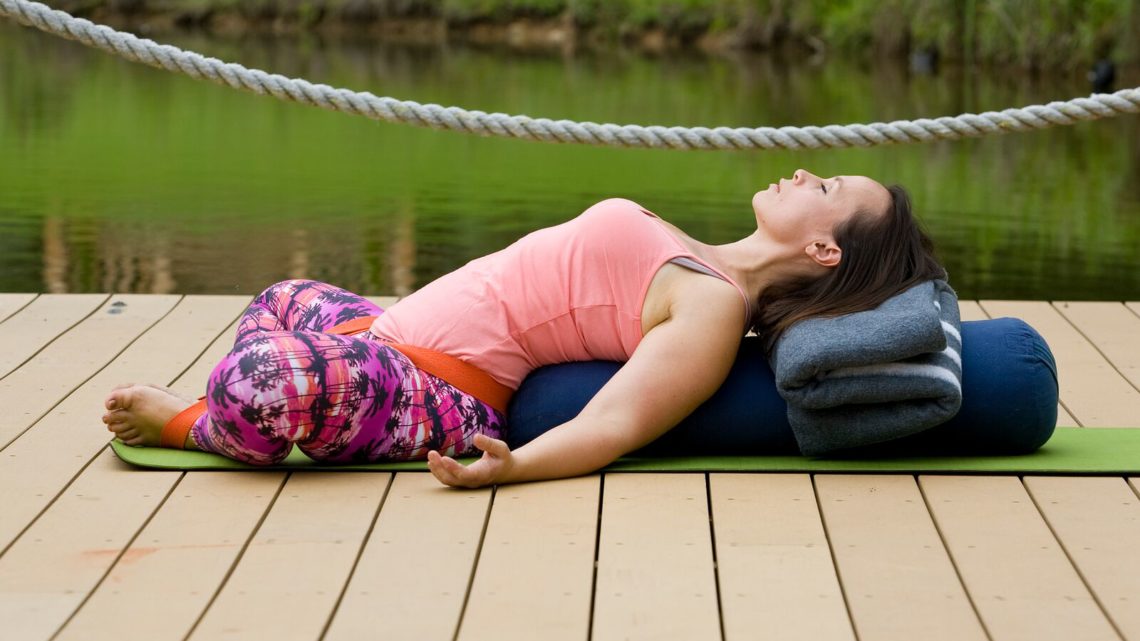It goes without saying that getting a restful night’s sleep can be an essential mood booster. Getting your required amount of quality sleep reduces stress and depression, as well as increases your overall wellbeing.
However, many of us struggle with getting to sleep. Statistics also indicate that those of us who are able to doze off eventually are still not getting the recommended eight hours needed for good health and an overall positive mood.
If this applies to you, don’t get discouraged. There are several ways to deal with this common problem. Read on to discover seven evening yoga practices that can help boost your mood.
1. Deep breathing
Rather than lying in your bed unable to sleep, try to focus on deep breathing. When you are sad, your inhalation will tend to be shallow and short, while your exhalation will appear long and exaggerated. This is a troublesome breathing pattern, and if you notice yourself defaulting to it, you should take a few minutes to concentrate on deep breaths in order to restore your emotional balance.
A good way to restore balance through breathing at bedtime is to try Sama Vritti, or equal breathing, prior to going to sleep. You simply breathe in and out of your nose for an equal count. Try starting with a three count, and as you progress your practice, you can increase to a four or five count. Let your breath be even and steady.
You can do this in bed while practicing the Corpse Pose, which will aid you in the reduction of tension and strain. You will feel the stress melt away every time you exhale, and you should feel your body settle deep into the fabric of your mattress. Just this simple act of deep breathing can ease depression and release endorphins into your system, creating a calm, positive outlook and enabling the body to prepare for restful sleep.
2. Restorative yoga poses
You can use restorative yoga poses to encourage relaxation and tranquility, and set the mood for peaceful sleep. Many of these poses are quiet, slow, and supportive, and designed to promote the opening of your body through the use of long holds, pillows, and blankets.
Approaching restorative poses as a fun exercise in exploration tends to make people happy, regardless of the pose, but dimming the room and lighting a few candles always helps. Some restorative poses include the Happy Baby Pose, the Reclined Bound Angle Pose, the Feathered Peacock Pose, the Forward Folds, and the Backward Bends.
Happy Baby Pose
There really isn’t anyone in the world that wouldn’t smile at the sight of a happy baby. Doing this pose will make you feel great freedom in your hips as you roll around a bit. It can also provide you with an impromptu lower back massage.
Supta Baddha Konasana
The Supta Baddha Konasana, or Reclined Bound Angle Pose, is more efficient if you first support your spine by lying over a flat bolster. Lay your hands on your stomach, feel the expansive inhalation, and focus intently on it. Like your breath, acknowledge the ebb and flow of your emotional state and tap into your inner joy.
Pincha Mayurasana
Inversions, like the Pincha Mayurasana, or Feathered Peacock Pose, builds confidence, helps you relax, and will boost your mood. After all, it is really difficult to feel confident and sad at the same time.
Forward Folds
Forward folds, like the Uttanasana, or Standing Forward Fold, can activate the parasympathetic nervous system—the system that provides relaxation. Incorporating these poses into your evening routine will promote rest and calm your mind.
Backbend
Almost all backbends are energising, so starting a backbend practice can quickly boost your mood when you start to feel anxious or depressed. The Ustrasana, or Camel Pose, stretches your shoulders and chest so much more efficiently than other backbend poses. Additionally, the Ustrasana variations from dropping back to slowly “swimming” the arms back one at a time can help your flexibility.
3. Positive reflections list
When we focus on the positive aspects of our lives and show gratitude, we tend to increase our happiness and decrease depression. Many studies have proven that what we focus on directly affects how we feel—so why not look on the positive?
If you write down the positive moments from your day each night before you turn in, you should focus on pleasant thoughts, and, in turn, be able to sleep better. Simply write down three distinct things that went well during the day or elaborate on three things that you are thankful to have in your life. Keep a journal or small notebook by your bedside specifically for this list. Remember to be specific and reimagine the items as you record them nightly.
4. Relaxing or meditative music
There are so many types of music that can be considered relaxing, such as jazz, classical, and new age. Listening to these calming melodies is similar to a baby hearing a lullaby. This is because similar areas of the brain are stimulated helping us to unwind and fall into deep sleep. Try listening to a soothing 45-minute playlist each night before bed to promote relaxation.
5. Warm milk with nutmeg
In Ayurveda, the Indian healing system frequently associated with yoga, golden or spiced milk is usually recommended to promote peaceful sleep. This type of milk usually contains nutmeg, which is used in Ayurvedic practice as a mild sedative, and other healing spices such as ginger, cardamom, cinnamon, and turmeric. Add a bit of honey for sweetening and warm it up on the stove.
6. Self massage
You can give yourself a relaxing massage using warm oils or body lotions. Gently massage both feet after soaking them in warm water. Your body’s energy channels, or nadis, also begin at your forehead, between the eyes, and end in your feet. That is why massaging both the head and feet provides major relaxation benefits and upswings in mood.
7. Essential oils
Most people are aware that lavender oil may be linked to providing better sleep, but did you also know that the use of different essential oils can also alleviate depression and anxiety?
There are many ways to incorporate essential oils into your evening routine. You can dilute them into a carrier oil, such as apricot kernel or sweet almond, and massage the fragrant mix into your wrists or neck. Another option is to use a diffuser and allow the scent to permeate your bedroom while you drift off.
Using any of these yoga practices faithfully will allow your body and mind to rest easier, while your spirit will feel happier and freer. Pick any of these practices that you feel speak to you and you will receive great benefits with continued practice.
If you enjoyed this post, feel free to share it with your friends and family. After all, sharing is caring!
Author: Carolyn Clarke
Carolyn Clarke is a freelance writer and yoga practitioner from Santa Monica, California. As a mother to twin boys, she can appreciate the value of a restful night’s sleep. She enjoys all-natural products from YUNI Beauty and uses them to help relax. During her free time, she enjoys writing and researching new topics.














